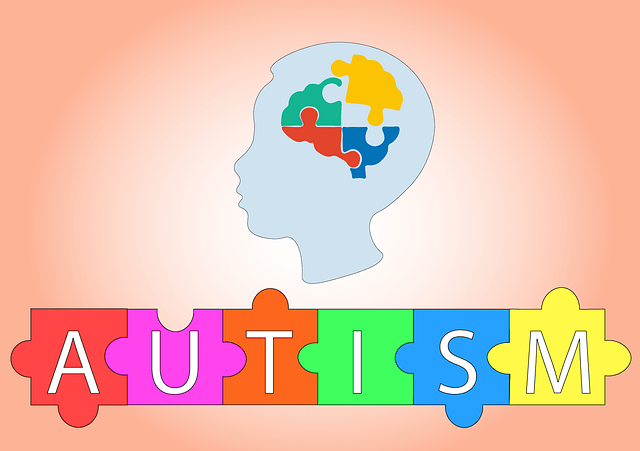Autism-Friendly Jobs
![]()
Important Note: LeafWing Center Does Not Hire for Jobs
LeafWing Center is not an employer and does not hire people for jobs. This blog post is for informational purposes only. Our goal is to provide helpful resources and guidance to assist autistic individuals in finding workplaces that support their strengths.
When is it a good time to start thinking about an autism-friendly job for your autistic child? Part of becoming an adult is entering the workforce to put your skills to good use and make an income. Many people around the age of 16 begin to take entry-level jobs over the summers to start exploring what their skills and strengths may be for future careers. Getting a job for a person with autism can be difficult as they might not know what their skills are or have trouble maintaining a job with needs that are different from other typical employees. Doing some research can be helpful for those with autism to find a job that best fits them. Looking for autism-friendly employers, and autism-friendly jobs, knowing about the different groups helping those with autism find jobs.
We are always thinking about our children in their current state, but our children will become adults. Then what? Let Leafwing be a resource when developing your child with autism for the next phase of their life – adulthood.

How to find an autism-friendly job
It’s also important to consider what kind of job may fit an individual’s needs and abilities best when looking for an autism-friendly job. Jobs that are repetitive and require minimal communication may be ideal for those who need structure and routines in order to succeed at work. There are many different types of jobs available, so it’s important to explore all options before settling on one position.
Steps:
- Individuals should identify their strengths and skills that can be beneficial in the workplace. These can include computer skills, problem-solving abilities, or creative thinking. Knowing what qualities to showcase when interviewing for a job can help individuals with autism stand out from the crowd.
- It is important to connect with organizations or groups dedicated to helping those on the autism spectrum find employment. These types of organizations have resources and services tailored specifically for those with autism such as job placement programs and training opportunities. They also provide support during the process of finding and applying for jobs.
- It is essential to research companies that are known for their efforts in hiring people with autism. These companies often have programs in place to ensure that people on the spectrum are given equal opportunities as others. Websites such as Autism Speaks offer a list of potential employers who are known for providing jobs for individuals on the spectrum.
By taking these steps, those with autism can increase their chances of obtaining an autism-friendly job and having success in the workplace!

Autism-Friendly Employers
One way to find autism-friendly employers is to research companies that have been noted for their efforts in hiring people with autism. These companies often have programs in place to ensure that people with autism are given the same opportunities as others. Additionally, websites such as Autism Speaks offer a list of potential employers who are known for providing jobs for people on the spectrum.
List of autism-friendly employers:
- AMC Theaters: works with the FOCUS program which gives the same opportunities to autistic people to earn a wage and benefits alongside other typical associates.
- Chevron: works with PathPoint which helps to place those with autism into jobs that match well with their skills.
- CVS: works with people with autism to get job training and get a job coach to help them find a job that meets their skills.
- Ford: developed FordInclusiveWorks to help those with autism get jobs in the company and combat issues that people with autism face in keeping jobs.
- Google: the website states that they accept, thrive, and benefit from the skills that people with autism bring to the workforce. They also allow for accommodations during the interview and training processes.
- Grocery Stores (Kroger, Giant Eagle, etc.): many grocery stores will hire people with autism of all ages from teens, to young adults, and adults to do entry-level jobs such as bagging, cart return, and stocking.
- Home Depot: Both CVS and Home Depot work with the same group to help those with autism get job training and match their skills to jobs. To date, 1,000 people with autism have gotten matched with jobs at Home Depot.
- JP Morgan Chase: launched the Autism at Work program to hire those with autism and allow them access to needed accommodations in the workforce.
- Lowe’s: won many awards for their inclusive workplace. They offer many opportunities once hired such as scholarships, tuition reimbursement, job coaching, and skill training.
- Walgreens: works with the group “retail employees with disabilities” and has a special evaluation process for those with disabilities to make sure that they are placed in a job that promotes and uses their strengths.
- Walmart: scored a 100% on the Disability Equality Index (which measures how well a company is doing with hiring, training, and keeping employees with disabilities). As stated on the website people with disabilities including autism should not feel intimidated to apply for any job on the website.
Autism-Friendly Jobs
Based on the number of companies that will hire a person with autism, it is safe to say that any job could be autism-friendly as long as the person meets the skills required for the job. So, a person with autism should not limit themselves to only certain jobs or only entry-level jobs. A person with autism should first determine what interests them and what their skills and strengths are to determine what kind of job would be suitable for them. They can use a group that provides mentors and training for them to be ready for the workforce as well as use the company they apply for to gain access to the needed resources for them to be successful.
Samples of autism-friendly jobs
Finding employment for individuals with autism can be a challenge, but there are some jobs that are particularly suited to those on the spectrum. Autism-friendly jobs typically have certain qualities, such as being predictable, requiring minimal social interaction, and providing sensory input. These types of jobs may offer great opportunities for individuals with autism to reach their fullest potential.
Here is a list of some potential job opportunities for those on the autism spectrum:
Let Leafwing Center help with the daily routine for your autistic child, so you can have a successful bedtime routine. Our ABA therapists are trained in creating personalized plans that match your child’s ability levels.
- Computer Programmer – Computer programming is an excellent job for individuals with autism because it is logical and predictable and offers plenty of solitary work time.
- Pharmacy Technician – Pharmacy technicians often work in a quiet environment behind the counter in a pharmacy, filling prescriptions and managing inventory. This type of job requires attention to detail, which many autistic individuals excel at.
- Web Designer – Autistic people have the inherent ability to process large amounts of information quickly and accurately, making web design an ideal job opportunity for them. Web design involves designing websites or graphics using software tools; this type of job allows autistic people to utilize their skills without having to interact with others too much outside their comfort zone.
- Data Entry Clerk – A data entry clerk typically works alone in a quiet office environment entering data into computer databases or spreadsheets; this kind of job requires accuracy and focus which are traits often seen in autistic people.
- Dog Groomer – Dog groomers need to be patient and gentle when dealing with animals, which makes it an ideal career choice for someone on the autism spectrum who enjoys working with animals or has experience working in animal care settings such as kennels or veterinary clinics. Additionally, grooming dogs also involves very little face-to-face contact with clients making it easy for someone who might otherwise feel uncomfortable interacting socially.
- Accounting Clerk – Accounting clerks often work independently preparing financial documents such as invoices or accounts receivable/payable records; they also handle routine accounting tasks like recording transactions or reconciling accounts—all tasks that require precision and attention to detail—traits many autistic individuals possess!
In addition to providing employment opportunities for individuals with autism, companies that offer these types of positions can benefit from their employees’ unique skill sets and strengths. For instance, those on the spectrum may have an aptitude for highly structured tasks or an ability to focus intently for long periods of time.
Ultimately, finding a job that suits an individual’s skill set can be a great way to empower individuals with autism. With the right job and support from employers and coworkers, those on the spectrum can reach their fullest potential in the workplace.
Groups that help those with autism find jobs
It may be beneficial to work with organizations or groups dedicated to helping individuals with autism find employment. These organizations often provide job placement resources and services that can be tailored specifically for those with autism. For example, the Autism Society of America has a job placement program that helps connect employers with qualified candidates on the spectrum.
List of groups that partner with individuals with autism to find jobs:
- Autism at Work: created by JP Morgan Chase to allow those with autism to get the tools they need to succeed. Anything from training, career advice, mentors, and lunch buddies
- FOCUS Program: stands for Furthering Opportunities, Cultivating Untapped Strengths. The program works with people across all states to employ people at AMC theaters.
- Ken’s Krew: created by a group of parents who had children with autism as they were worried about them finding satisfactory employment. Their mission is to recruit students with autism in schools, evaluate them for their strengths and skills, provide training, find and help them apply for employment, and support them through employment and beyond.
- PathPoint: a non-profit that helps people with autism pursue their hopes and dreams through strengthening workplace abilities, building life skills, and developing meaningful relationships.
- REDI: stands for Retail Employee with Disabilities Initiative. This group helps people with autism gain valuable career skills that give candidates the tools to be successful in any retail setting.
Those with autism have the ability much like anyone else to obtain and maintain a job out in the real world. It just takes a few simple steps to identify the strengths and skills the person has, work with a group supporting those with autism in the workplace, and connect and work with employers who are autism-friendly to be successful. Getting a job can create even more opportunities and offer a chance to gain additional skills for those with autism.
Finally, it’s important to remember that anyone can succeed in any job if they have the right support and guidance from their employer. It’s essential that employers understand how individuals with autism think and act differently than others in order to create an environment where everyone feels comfortable and capable of doing their best work. With some extra patience, understanding, and support from employers, individuals with autism can achieve great success in the workplace!
Leafwing can be a valuable resource for developing individuals with autism for their transition into adulthood, as it is important to consider their future beyond the current state of childhood.
Other Related Articles
Frequently asked questions about ABA therapy
What is ABA Therapy used for?
ABA-based therapy can be used in a multitude of areas. Currently, these interventions are used primarily with individuals living with ASD; however, their applications can be used with individuals living with pervasive developmental disorders as well as other disorders. For ASD, it can be used in effectively teaching specific skills that may not be in a child’s repertoire of skills to help him/her function better in their environment whether that be at home, school, or out in the community. In conjunction with skill acquisition programs, ABA-based interventions can also be used in addressing behavioral excesses (e.g., tantrum behaviors, aggressive behaviors, self-injurious behaviors). Lastly, it can also be utilized in parent/caregiver training.
In skill acquisition programs, a child’s repertoire of skills is assessed in the beginning phase of the services in key adaptive areas such as communication/language, self-help, social skills, and motor skills as well. Once skills to be taught are identified, a goal for each skill is developed and then addressed/taught by using ABA-based techniques to teach those important skills. Ultimately, an ABA-based therapy will facilitate a degree of maintenance (i.e., the child can still perform the learned behaviors in the absence of training/intervention over time) and generalization (i.e., the learned behaviors are observed to occur in situations different from the instructional setting). These two concepts are very important in any ABA-based intervention.
In behavior management, the challenging behaviors are assessed for their function in the beginning phase of the services. In this phase, the “why does this behavior happen in the first place?” is determined. Once known, an ABA-based therapy will be developed to not just decrease the occurrence of the behavior being addressed, but also teach the child a functionally-equivalent behavior that is socially-appropriate. For example, if a child resorts to tantrum behaviors when she is told she cannot have a specific item, she may be taught to accept an alternative or find an alternative for herself. Of course, we can only do this up to a certain point—the offering of alternatives. There comes a point when a ‘no’ means ‘no’ so the tantrum behavior will be left to run its course (i.e., to continue until it ceases). This is never easy and will take some time for parents/caregivers to get used to, but research has shown that over time and consistent application of an ABA-based behavior management program, the challenging behavior will get better.
In parent training, individuals that provide care for a child may receive customized “curriculum” that best fit their situation. A typical area covered in parent training is teaching responsible adults pertinent ABA-based concepts to help adults understand the rationale behind interventions that are being used in their child’s ABA-based services. Another area covered in parent training is teaching adults specific skill acquisition programs and/or behavior management programs that they will implement during family time. Other areas covered in parent training may be data collection, how to facilitate maintenance, how to facilitate generalization of learned skills to name a few.
There is no “one format” that will fit all children and their families’ needs. The ABA professionals you’re currently working with, with your participation, will develop an ABA-based treatment package that will best fit your child’s and your family’s needs. For more information regarding this topic, we encourage you to speak with your BCBA or reach out to us at info@leafwingcenter.org.
Who Can Benefit From ABA Therapy?
There is a common misconception that the principles of ABA are specific to Autism. This is not the case. The principles and methods of ABA are scientifically backed and can be applied to any individual. With that said, the U.S. Surgeon General and the American Psychological Association consider ABA to be an evidence based practice. Forty years of extensive literature have documented ABA therapy as an effective and successful practice to reduce problem behavior and increase skills for individuals with intellectual disabilities and Autism Spectrum Disorders (ASD). Children, teenagers, and adults with ASD can benefit from ABA therapy. Especially when started early, ABA therapy can benefit individuals by targeting challenging behaviors, attention skills, play skills, communication, motor, social, and other skills. Individuals with other developmental challenges such as ADHD or intellectual disability can benefit from ABA therapy as well. While early intervention has been demonstrated to lead to more significant treatment outcomes, there is no specific age at which ABA therapy ceases to be helpful.
Additionally, parents and caregivers of individuals living with ASD can also benefit from the principles of ABA. Depending on the needs of your loved one, the use of specified ABA techniques in addition to 1:1 services, may help produce more desirable treatment outcomes. The term “caregiver training” is common in ABA services and refers to the individualized instruction that a BCBA or ABA Supervisor provides to parents and caregivers. This typically involves a combination of individualized ABA techniques and methods parents and caregivers can use outside of 1:1 sessions to facilitate ongoing progress in specified areas.
ABA therapy can help people living with ASD, intellectual disability, and other developmental challenges achieve their goals and live higher quality lives.
What does ABA Therapy look like?
Agencies that provide ABA-based services in the home-setting are more likely to implement ABA services similarly than doing the same exact protocols or procedures. Regardless, an ABA agency under the guidance of a Board-Certified Behavior Analyst follows the same research-based theories to guide treatment that all other acceptable ABA agencies use.
ABA-based services start with a functional behavior assessment (FBA). In a nutshell, a FBA assesses why the behaviors may be happening in the first place. From there, the FBA will also determine the best way to address the difficulties using tactics that have been proven effective over time with a focus on behavioral replacement versus simple elimination of a problem behavior. The FBA will also have recommendations for other relevant skills/behaviors to be taught and parent skills that can be taught in a parent training format to name a few. From there, the intensity of the ABA-based services is determined, again, based on the clinical needs of your child. The completed FBA is then submitted to the funding source for approval.
One-on-one sessions between a behavior technician and your child will start once services are approved. The duration per session and the frequency of these sessions per week/month will all depend on how many hours your child’s ABA services have been approved for—usually, this will be the number recommended in the FBA. The sessions are used to teach identified skills/behaviors via effective teaching procedures. Another aspect of ABA-based services in the home-setting is parent training. Parent training can take many forms depending on what goals have been established during the FBA process. The number of hours dedicated for parent training is also variable and solely depends on the clinical need for it. If a 1:1 session is between a behavior technician and your child, a parent training session or appointment is between you and the case supervisor and with and without your child present, depending on the parent goal(s) identified. Parent training service’s goal is for you to be able to have ample skills/knowledge in order for you to become more effective in addressing behavioral difficulties as they occur outside of scheduled ABA sessions. Depending on the goals established, you may be required to participate in your child’s 1:1 sessions. These participations are a good way for you to practice what you have learned from the case supervisor while at the same time, having the behavior technician available to you to give you feedback as you practice on those new skills.
As mentioned in the beginning, no two ABA agencies will do the same exact thing when it comes to providing ABA services; however, good agencies will always base their practice on the same empirically-proven procedures.
How do I start ABA Therapy?
In most cases, the first item required to start ABA therapy is the individual’s autism spectrum disorder (ASD) diagnosis report. This is typically conducted by a doctor such as a psychiatrist, psychologist, or a developmental pediatrician. Most ABA therapy agencies and insurance companies will ask for a copy of this diagnosis report during the intake process as it is required to request an ABA assessment authorization from the individual’s medical insurance provider.
The second item required to start ABA therapy is a funding source. In the United States, and in cases where Medi-Cal or Medicare insurances are involved, there is a legal requirement for ABA services to be covered when there is a medical necessity (ASD diagnosis). Medi-Cal and Medicare cover all medically necessary behavioral health treatment services for beneficiaries. This typically includes children diagnosed with ASD. Since Applied Behavior Analysis is an evidence based and effective treatment for individuals with ASD, it is considered a covered treatment when medically necessary. In many cases, private insurance will also cover ABA services when medically necessary, however in these cases, it is best to speak directly with your medical insurance provider to determine the specifics of the coverage and to ensure that ABA is in fact, a covered benefit. Additionally, some families opt to pay for ABA services out-of-pocket.
The next step to starting ABA therapy is to contact an ABA provider whom you are interested in working with. Depending on your geographic location, ABA agencies exist in many cities across the United States. Your insurance carrier, local support groups, and even a thorough online search can help you find reputable and properly credentialed ABA agencies near you. Our organization, LeafWing Center, is based in southern California and is recognized for aiding people with ASD achieve their goals with the research based on applied behavior analysis.
Once you have identified the ABA provider with whom you wish to work, they should help you facilitate the next steps. These will include facilitating paperwork and authorizations with your funding source. Once the assessment process begins, a BCBA (Board Certified Behavior Analyst) or qualified Program Supervisor should get in contact with you to arrange times in which interviews with parents/caregivers and observations of your loved one can be conducted. This will help in the process of gathering important clinical information so that with your collaboration, the most effective treatment plans and goals can be established for your loved one. This process is referred to as the Functional Behavior Assessment (FBA) and is elaborated on in different blog posts on our website. With regard as to what can be expected once ABA therapy begins, please read our blog post titled: When You Start an ABA program, What Should You Reasonably Expect from Your Service Provider?















 Which children benefit the most from ABA therapy
Which children benefit the most from ABA therapy











